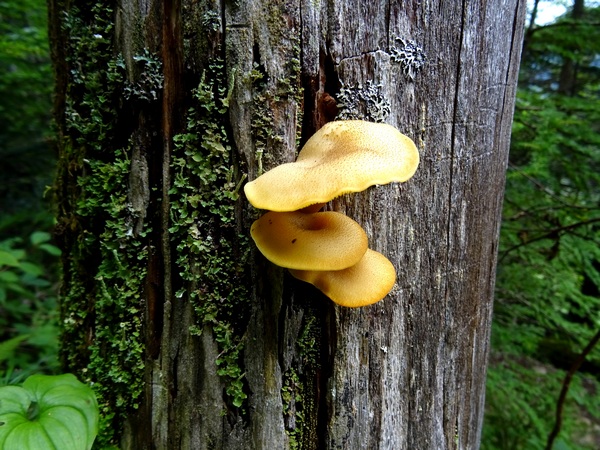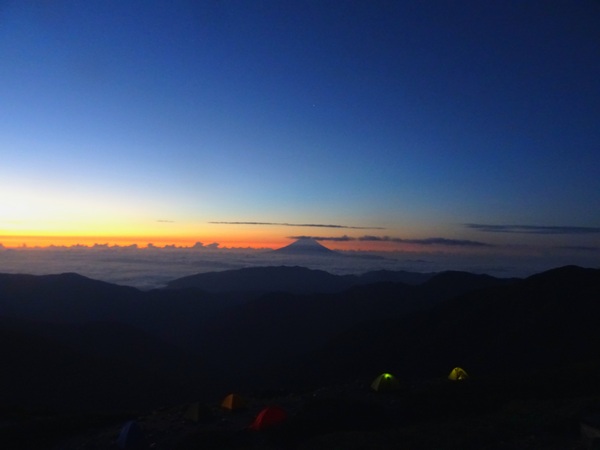
Good morning! Wonder why some folks prefer, over the lodge, their own tent, why they’re willing to haul tent, sleeping bag, mattress pad, cooking gear up 1700 meters of a steep grade? Here’s your answer.
They feel a dim light to the east. They crack open their eyes. And they enjoy the visual feast. Without moving an inch.
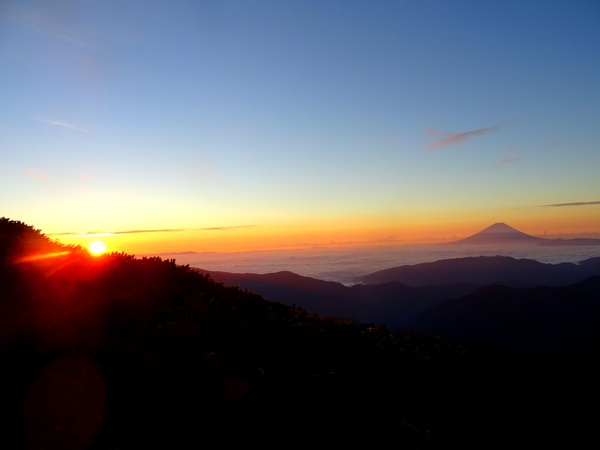
The night before, our legs had felt like two-hundred-year-old, hollowed-out tree stumps, ones you could easily pull apart with your hands, ones you could easily kick over, ones that even a sudden breeze might knock over—hollowed-out, decrepit stumps filled with thousands of buzzing bees.
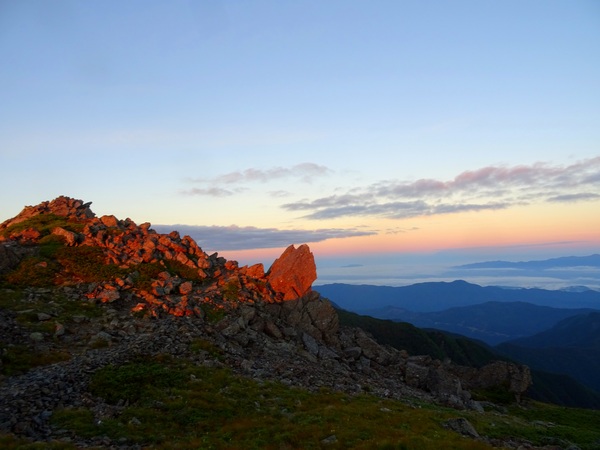
This morning, though, they felt a little better, and by 5 AM we were on the ridge trail for the final ascent to the peak of Mt. Kita.
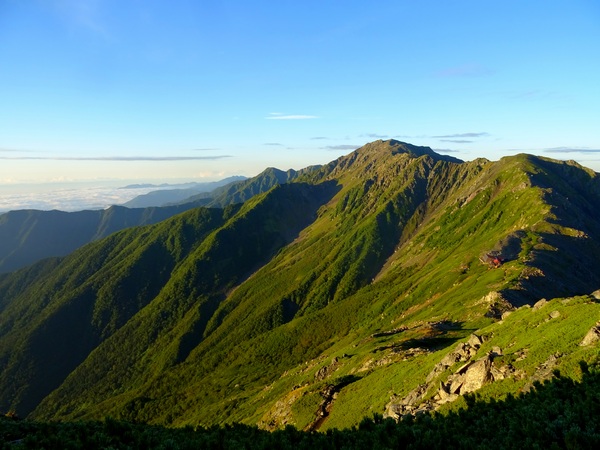
An hour in and we could look back down at the lodge—the red dot on the left side of the ridge. Yep, this is what an hour looks like.
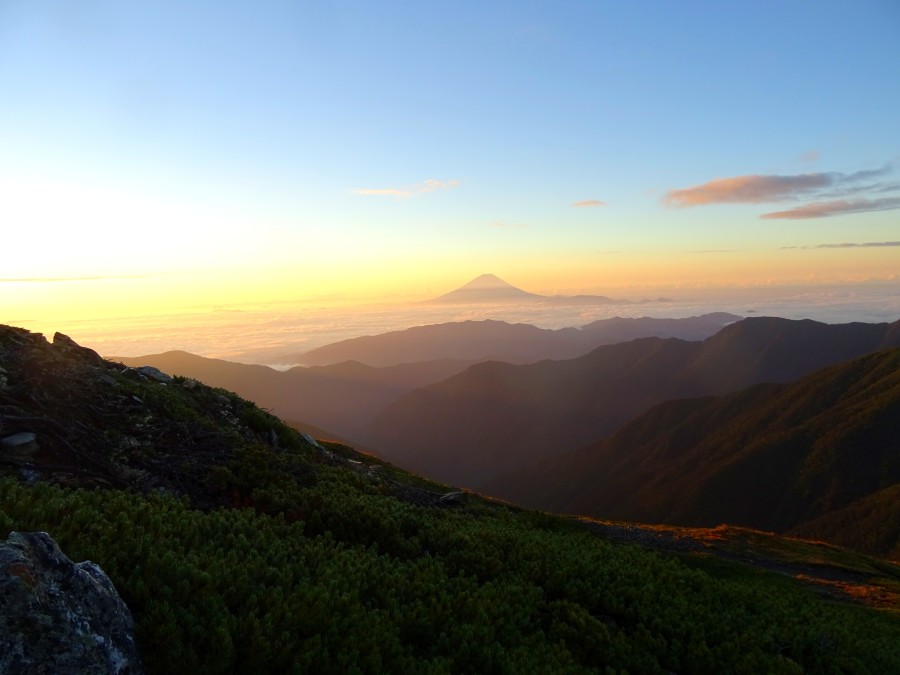
Of course, we got the Big Eyes. The Big Eyes are great. Maybe you remember getting the Big Eyes when you were a kid at Christmas time. The hiking Big Eyes are much better. When you were a kid, you got the Big Eyes and then got things into your hands and probably, eventually, wore them out. With the hiking Big Eyes, you don’t actually touch anything with your fingers, which, perhaps ironically, makes your possession of them all the more intense. The hiking Big Eyes feels just like the thirty seconds of ascertaining what all’s beneath the tree—only it lasts for hours and hours.
Yes, possession. It’s a very special and important feeling.
Feeling that you can possess without owning or consuming is both entralling and invigorating.
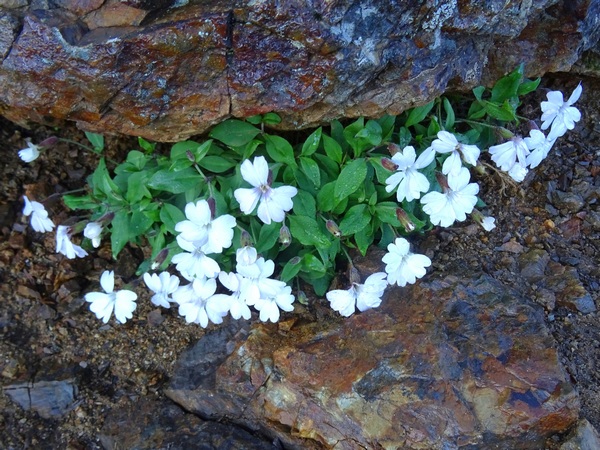
Your eyes are ecstatic. With everything.

And then you scramble up through the last bit of rock and you look something like this.
There were maybe twenty people up there with us. They all looked like this. No one was moaning about anything. No mention of decaying tree-stump legs.
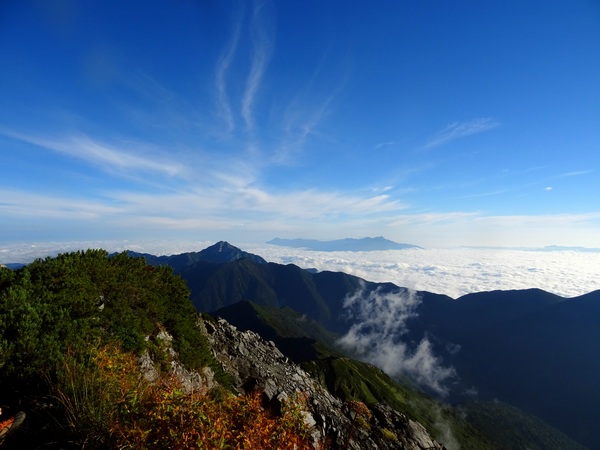
Okay, let the Big Eyes enjoy the moment. There’s the pointed Mt. Kaikoma, and floating in the clouds, behind, Yatsugadake, a run of eight peaks, Akadake on the far right.
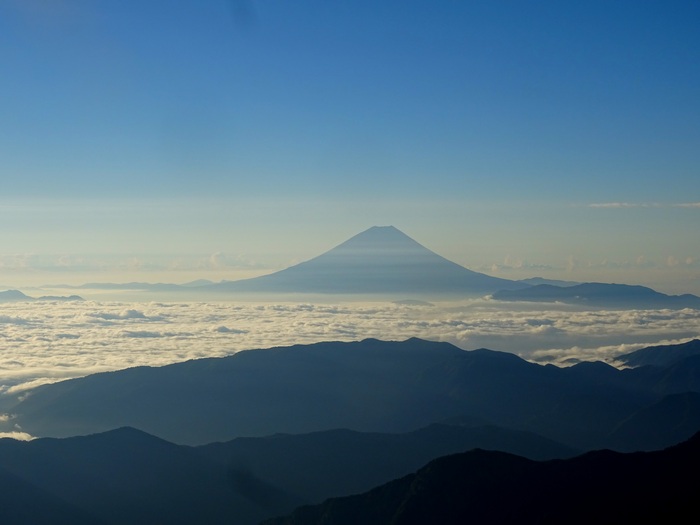
The orange glow has vanished and a now blue Fuji floats in a sea of clouds.
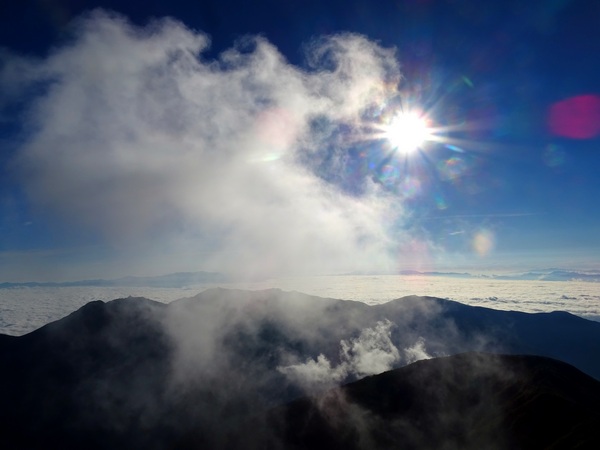
By 6:45 or so, the mist begins to roll in, and you’re glad you stayed in the lodge (or in a tent)—it’s the only way to be up here this time of the day.
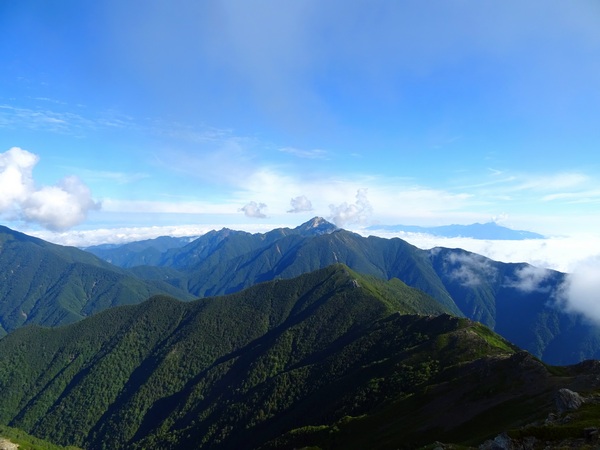
And then down the other side you go.
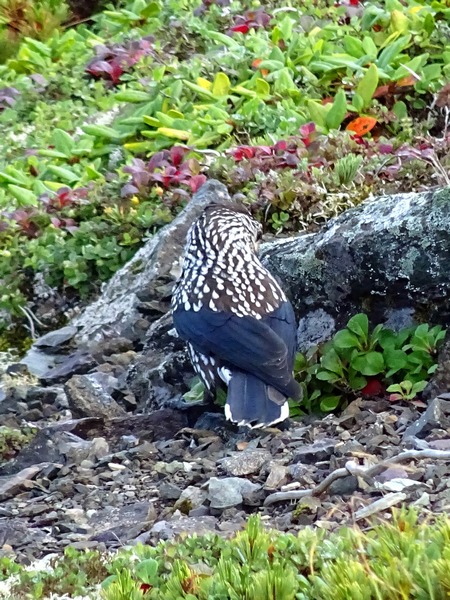
Back into the evergreen shrub range with your new friends, the spotted nutcrackers.
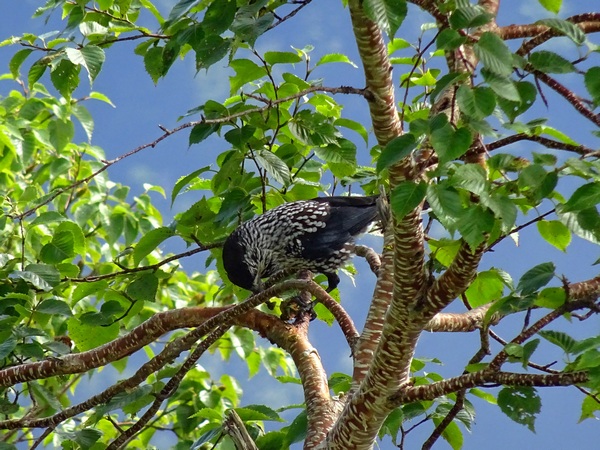
Back below the treeline.

Most of the way, we walked in strong sunshine.
We were glad we hadn’t had so much sunshine on the way up, but it wasn’t too brutal going down.
From time to time, the mist blew off the peak of Mt. Kita, and a bit of space would open up between the tree branches, and we’d get a good view.
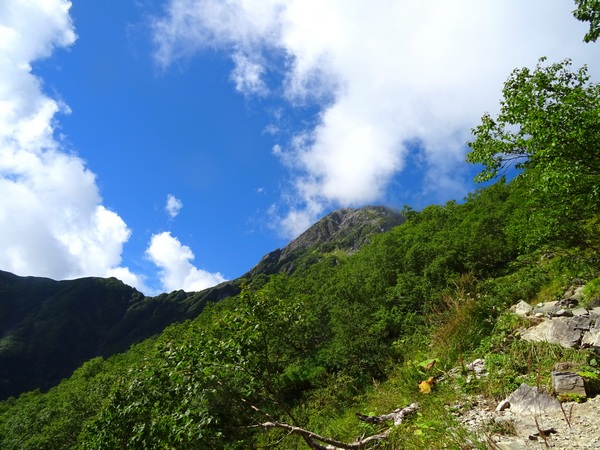
This side of the mountain, this was supposed to be the less steep option, but for the most of it, it didn’t seem significantly more gentle than the way we’d gone up.
Still we felt good with the route we’d chosen.
Finally, for the last two hours we walked a forest that reminded us a lot of our regular hike up Ryuso Mountain in Shizuoka. Lots of cedar roots running through the trails, acting as steps.
For the record, we left the Mt. Kita Lodge at 5 AM, departed from the Mt. Kita summit at 6:55—and with only a couple of short breaks—got back to the trailhead (and a waiting microbus) at 11:35.
An hour later, we were easing our weary bones into a hot spring.
